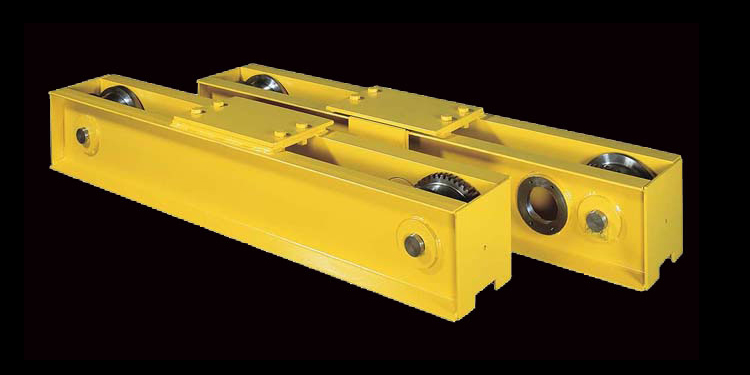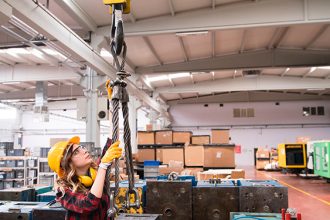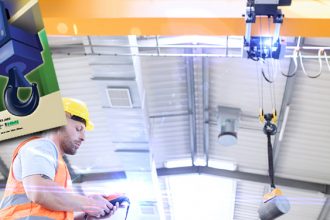Keep Overhead Bridge Crane Rails Free Of Debris With Rail Sweeps That Prevent Damage, Derailment

While keeping crane runway beams and girders clear of any foreign objects, dirt, or debris that might impede the travel of an overhead crane is a best practice for all operations, there’s always the chance that something might land on a rail unnoticed. That’s why rail sweeps exist.
As their name implies, rail sweeps are integrated into bridge end trucks and trolleys ahead of the wheels to clear the rail of a bridge crane. Integrated as a structural component of these traveling crane parts, rail sweeps are mounted in front of the wheels, ensuring that they make contact with (and knock off) any dirt, debris, or other object that they may encounter before the wheels do.
As the bridge end trucks and trolleys travel as part of the overhead lifting system’s handling and maneuvering tasks, the rail sweeps ensure nothing will obstruct their movement. Not only could these foreign objects cause damage to the equipment — including wheels, axles, and bearings — they could derail the wheels, causing them to fall off the runway or girder rail and creating a dangerous situation.
As a component, rail sweeps aren’t especially big relative to the entire overhead lifting system. But they are hugely important for the safety of the overall operation. Indeed, no fewer than three separate standards call for their use:
- The Occupational Safety and Health Administration’s standard OSHA 1910.179(e)(4): Bridge trucks shall be equipped with sweeps which extend below the top of the rail and project in front of the truck wheels.
- The American Society of Mechanical Engineers’ standard ASME B30.2: Overhead and Gantry Cranes, section 2-1.9: Bridge and trolley truck rail sweeps shall be provided in front of the leading wheels on both ends of the bridge and trolley end trucks to clear the rail of objects which could cause damage or derailment.
- The Crane Manufacturers Association of America standard CMAA Specification 70, section 3.6.3: On bridge end trucks, rail sweeps shall be provided in front of each outside wheel and shall project below the top of the runway rail.
- Additionally, CMAA Spec 70, section 3.9.2: On trolley frames, rail sweeps should be provided in front of each outside wheel and should project below the top of the bridge rail.
In addition to routinely inspecting the runway rails and girders to ensure they are free of foreign objects, the rail sweeps themselves should be checked. Annually, rail sweeps should be closely inspected to ensure they are not bent, damaged, or broken. Further, each rail sweep’s connection to the bridge end trucks and trolleys should also be inspected to verify that they are properly aligned and firmly attached. Any damage or misalignment should be reported to a supervisor or the crane owner immediately and required maintenance or replacement performed promptly.
Want to learn more about overhead lifting safety? The three members of the Overhead Alliance — the Crane Manufacturers Association of America (CMAA), Hoist Manufacturers Institute (HMI) and the Monorail Manufacturers Association (MMA) — each offer in-depth resources, standards, specifications, and safety checklists specific to that type of equipment. Additionally, the three recently gained ambassador status with OSHA’s Crane, Hoist and Monorail Alliance (CHM), and will promote cooperative programs with the federal agency, raising awareness of OSHA’s initiatives, outreach, communication, training and education, and also providing information, guidance and access to training resources that help protect the health and safety of workers using hoists, cranes and monorails.



